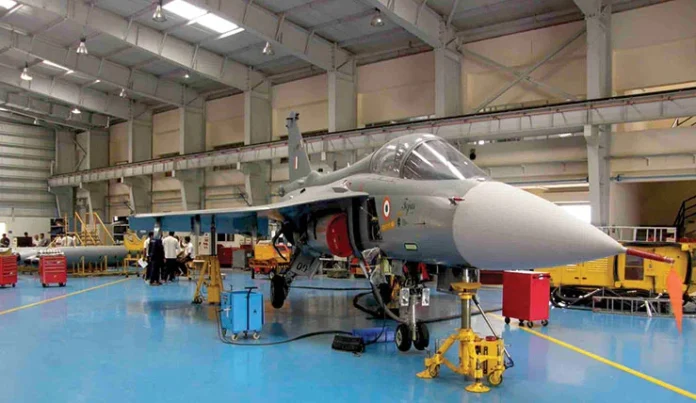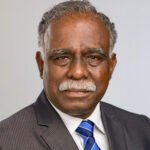On 8th October 2023, the Indian Air Force completes 91 years of glorious service in defending the territorial integrity of India. The IAF, along with the Indian Army and the Indian Navy, make the Indian armed forces the third largest and a powerful military in the world.
Notwithstanding these factors, it is important to recognise the fact that sustaining military force structure is not only expensive but a huge challenge for any country considering the varied demands of development that are placed on national resources. Nevertheless, it is extremely critical for a country to ensure optimal force structures are supported and sustained.
In recent times military leaderships have tended to echo some of the political and diplomatic statements of the national leadership. This is perfectly in order, particularly when it serves to reinforce India’s strategic and security stand. However, it is important to recognise the context in which some of these statements are made, as they may be for political image or even to create a perception of international norms.
For example, Prime Minister Modi’s statement to President Putin at the SCO conference that ‘today’s era is not that of war’ can easily be taken out of context. The statement was only half complete as he went on to emphasise the importance of diplomacy and dialogue to resolve the conflict.
Recently, there have been an increasing number of statements that allude to the need for changes in the Indian military to reflect supposedly Indian ethos and culture. These are tending towards structural changes that could impact military traditions, military ethos, and esprit-de-corps. There are occasions when military leadership have tended to make supporting statements.
In a democracy, these are political statements, and it would be most prudent for the military to recognise that these are best left to the political leadership to decide on such issues. Neither the ‘era of no war’ nor the culture and ethos aspect should influence the military leadership, whose single-minded focus should be on war-fighting capabilities.

An idea like the ‘era of no war’ is only possible through a strong military. Two thousand years ago the Roman general Vegetius famously said, “If you desire peace be prepared for war”. A strong military that is fully prepared for war will deter an adversary and thus enforce peace. There can be no ‘era of no war’ without the enforcement of peace through deterrence.
China and Pakistan will continue to be our adversaries for the foreseeable future. Therefore, it is critically important that military leadership pressure the government to ensure the optimal force structure through requisite funding and an effective modernisation strategy.
On the 90th anniversary of the IAF, the Chief of Air Staff stated the reality of the low force structure. He minced no words when he stated that the IAF needs to recover to its full strength of 42 fighter squadrons at the earliest, but he does not see the IAF exceeding 35 to 36 squadrons by the mid-2030s. Not much has changed a year later as the IAF celebrates its 91st anniversary.
Sustaining military force structure is not only expensive but a huge challenge for any country considering the varied demands of development that are placed on national resources
The IAF is currently at 31 squadrons and will decline to 28 squadrons as the last three MiG-21 Bison squadrons are phased out by 2025. By 2032-35 time frame the fleets of Jaguar, MiG 29, and Mirage 2000 aircraft would be set to retire. These would amount to 12 squadrons.
Over the next decade, the IAF truly faces an enormous challenge of sustaining its minimal force structure. The debates on theatre commands with the threat of parcelling out air assets in penny packets add to the complexity. The delays in various acquisitions for IAF’s modernisation have spanned nearly two decades leading to a current demand gap of nearly 300 aircraft.

The long delays in the MMRCA program are a lost opportunity for manufacturing 4.5-generation fighter jets in India by the earlier 2010-2012 timeframe. That time is now gone. Similarly, the government has continued to delay the 114 aircraft joint venture plan for manufacture in India. One can safely assume that this is also a thing of the past.
Every adversity should also be seen as an opportunity. In all this lost time of nearly a decade and a half, the indigenous Tejas program has gained. Adding to the 83 Mk 1A aircraft on order, the IAF has placed an order for 100 more Tejas Mk 1A aircraft, in all totalling a production run of 183 Mk 1As after the initial production of 40 Mk 1s. A production run of 223 aircraft is a significant boost to the Indian industry that will surely lead to consolidation of the production process, increase value addition through import substitution of components, and consolidate the overall aerospace ecosystem, particularly in the MSME sector.
For the IAF these 183 aircraft will fill the gaps in the light aircraft segment. The IAF will need to lean on the industry and the government to ensure better supply chain control, reduce import content, and accelerate the production rate to ensure all aircraft are delivered by 2030. The experience data of MK 1A, both from production and operations, should serve to not only make continued improvements but also accelerate the development of the Tejas Mk 2, which will be in the Rafael class and materialise into series production in time to replace the 12 squadrons of Jaguars, Mirages, and MiG 29s. The Tejas Mk 2 should truly become the backbone of the IAF along with the upgraded Su-30 MKI. This in effect will mean the Tejas MK 2 should have a production run of at least 300 aircraft.
For India to emerge as a system maker to eliminate the chances of a unipolar world and Western hegemony and contribute immensely to rewriting the rules for a more equitable, multipolar, and fair world order, it needs the strength of indigenous industrial and military capability to enforce the concept of an ‘era of no war’
All of the above requires a long-term coherent strategy characterised by consistency and continuity. The number of fighter aircraft is only one of the many challenges. There are allied requirements in terms of weapons development, sensors, power plants, electronics, and communications. Hence, a carefully crafted 20-years strategy that is driven by IAF’s force structure requirements well integrated into indigenous manufacturing can remove a significant amount of import dependency that exists today.
It is worthwhile to see where our main adversary, China, stands. While IAF’s squadron numbers are in a decline, the PLAAF has moved into a significant overdrive of its modernisation through production and upgrades of its 4/4.5/5 generation aircraft. Upgraded J-10s and J-11 to J-16 series (different versions of the reverse-engineered Su-27) number nearly 1100 aircraft, all of them now in the 4.5-generation category. The indigenous WS-10 and WS-15 engines are now powering increasing numbers of these fighters.

There are already over 200 J-20s, PLAAF’s 5th generation fighter aircraft, in operational flying. PLAAF’s new stealth bomber H-20, in the B-2 bomber class, is expected to be ready by 2025. Similarly, its Y-20 transport aircraft, like the American C-17, used by India, is being produced in increasing numbers to fill different roles, thus creating an expeditionary capability. China’s indigenisation strategy in areas of materials, electronic hardware, weapons, sensors, EW, components, drones etc. has removed much of PLAAF’s vulnerability to external supply chain shocks.
India’s smart geopolitical manoeuvring on the Ukraine issue, its high profile in the recently concluded G20 summit, it’s chairing of the SCO, and more importantly, its current profile as the fastest-growing major economy in the world has established India’s standing as an important player to watch as the world is in a transformation into a new order. India’s position, however, is that of a swing state. The current turmoil in the world order is a struggle for the creation of a multipolar world order.
International orders are created by ‘system makers’ whose strength comes from economic, technological, military, and political power. System makers vie for the support of swing states by attracting them through alliances and partnerships. The rest of the world remains system takers.
In a volatile world, a swing state’s value is limited to shaping the world in partnership with one of the leading sides but it cannot become a rule maker. Control over critical technologies, specifically in the aerospace domain, and a powerful military that is not dependent on imported weaponry is vital if India is to become a system maker.
Currently, the USA, Russia and China are system makers. An India that emerges as a system maker would eliminate the chances of a unipolar world and Western hegemony and contribute immensely to rewriting the rules for a more equitable, multipolar, and fair world order. A strong IAF, in full force and on the strength of indigenous industrial capability is a vital necessity to enforce the concept of an ‘era of no war’.
–The writer is a former Deputy Chief of Integrated Defence Staff for Policy, Plans, & Force Development (DCIDS – PP & FD). He is currently the President of The Peninsula Foundation, a Chennai-based public policy research think tank. The views expressed are of the writer and do not necessarily reflect the views of Raksha Anirveda
–The writer, a AVSM VM PhD (V) is a former Deputy Chief of Integrated Defence Staff for Policy, Plans, & Force Development (DCIDS – PP & FD). He is currently the President of The Peninsula Foundation, a Chennai-based public policy research think tank. The views expressed are of the writer and do not necessarily reflect the views of Raksha Anirveda






